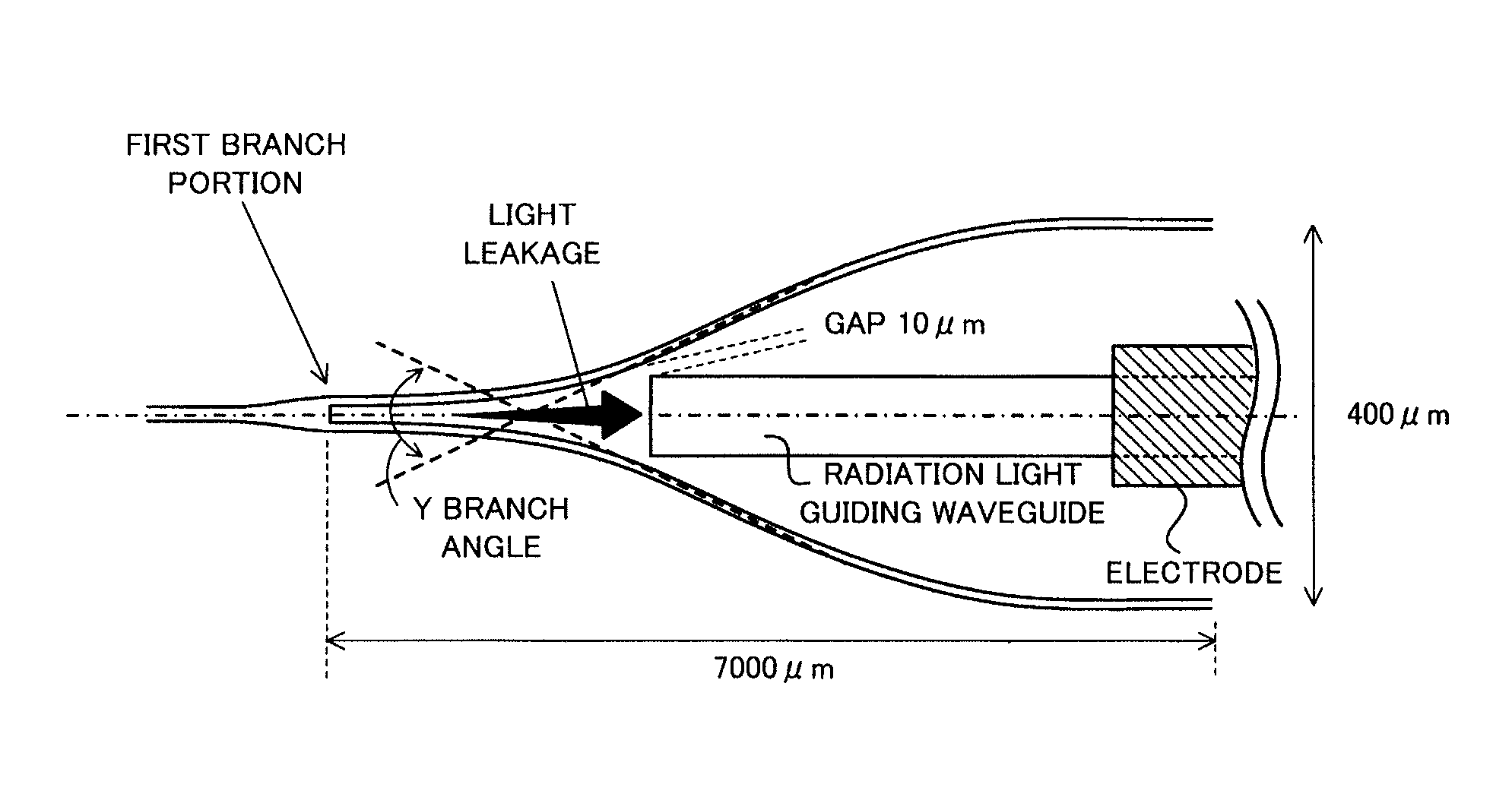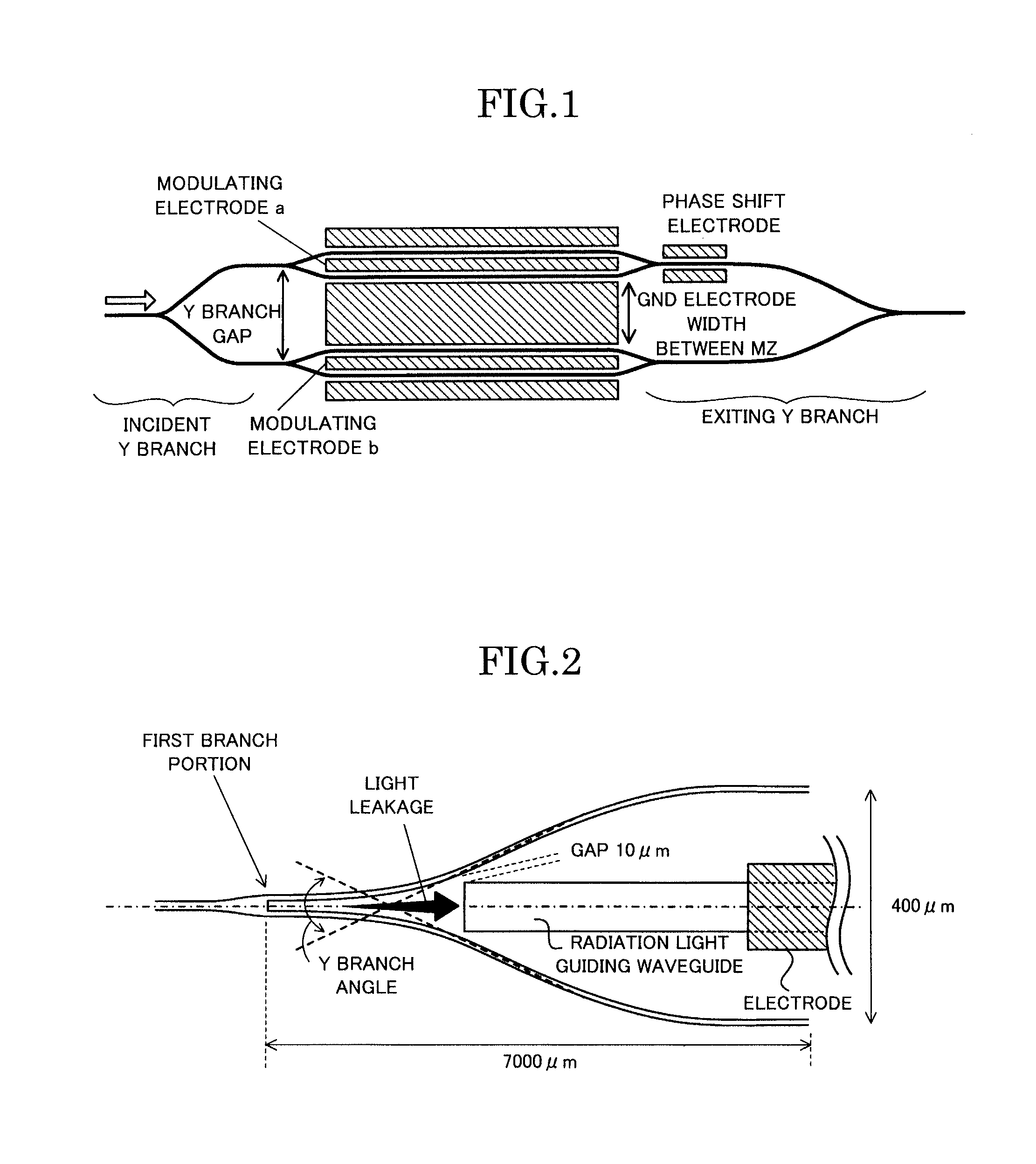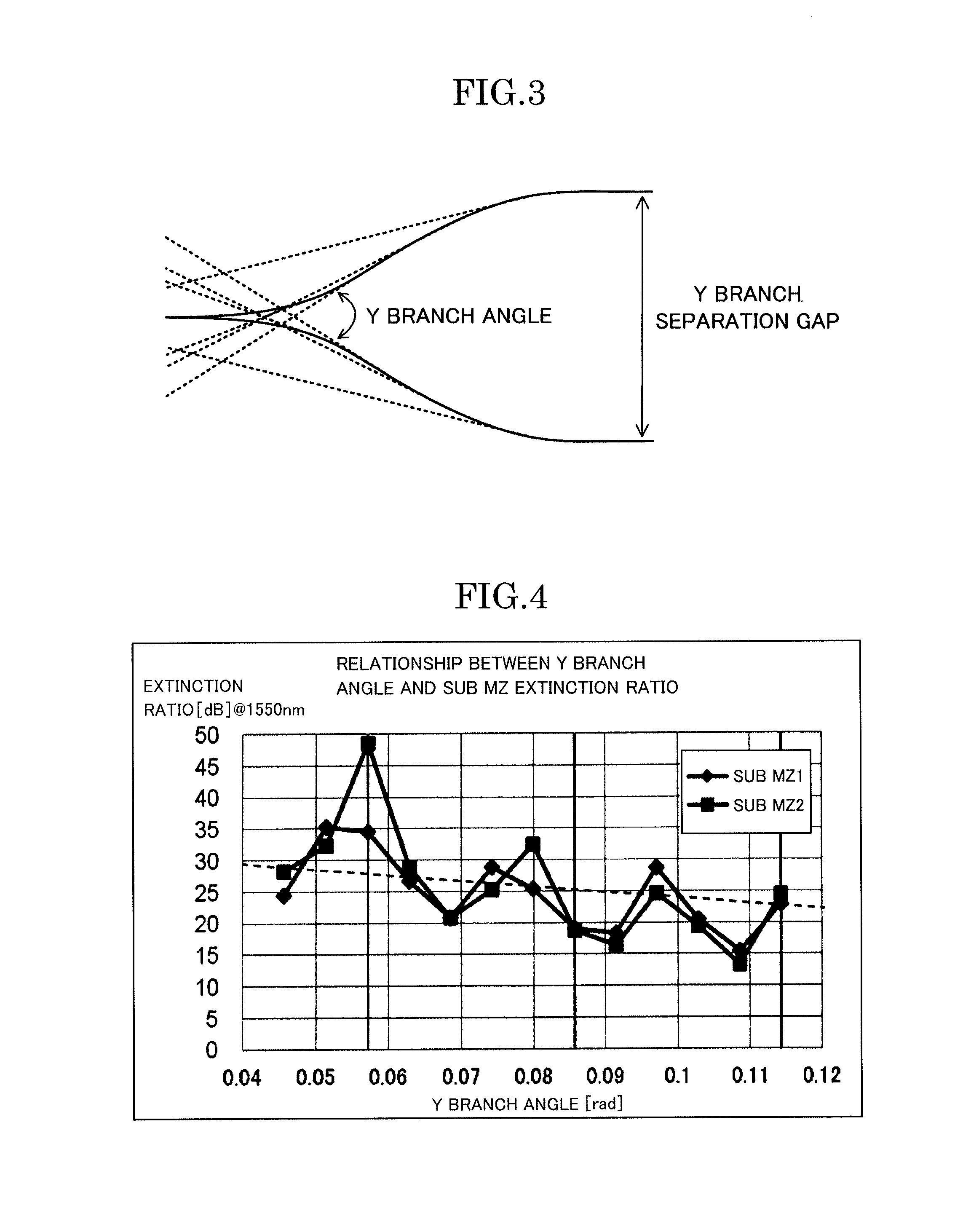Optical waveguide device
a waveguide and optical technology, applied in the field of optical waveguide devices, can solve the problems of easy inability to be used as optical devices in communication fields, and remarkably degradation of optical characteristics
- Summary
- Abstract
- Description
- Claims
- Application Information
AI Technical Summary
Benefits of technology
Problems solved by technology
Method used
Image
Examples
Embodiment Construction
[0039]Hereinafter, the optical waveguide device of the present invention will be described in detail by using preferred examples.
[0040]As illustrated in FIG. 2, the optical waveguide device of the present invention is an optical waveguide device in which an optical waveguide is formed on a substrate, the optical waveguide includes a first branch portion which branches light into two light rays at a branch angle of 1 / 35 rad or more, a second branch portion and a third branch portion are arranged to be connected to each of two branched waveguides branched from the first branch portion, a radiation light guiding waveguide is arranged between the two branched waveguides of the first branch portion, and guides radiation light radiated from between the two branched waveguides at the first branch portion to the outside of the optical waveguide, and an optical termination portion which absorbs the guided radiation light or emits the guided radiation light to the outside of the substrate is ...
PUM
| Property | Measurement | Unit |
|---|---|---|
| width | aaaaa | aaaaa |
| distance | aaaaa | aaaaa |
| thickness | aaaaa | aaaaa |
Abstract
Description
Claims
Application Information
 Login to View More
Login to View More - R&D
- Intellectual Property
- Life Sciences
- Materials
- Tech Scout
- Unparalleled Data Quality
- Higher Quality Content
- 60% Fewer Hallucinations
Browse by: Latest US Patents, China's latest patents, Technical Efficacy Thesaurus, Application Domain, Technology Topic, Popular Technical Reports.
© 2025 PatSnap. All rights reserved.Legal|Privacy policy|Modern Slavery Act Transparency Statement|Sitemap|About US| Contact US: help@patsnap.com



